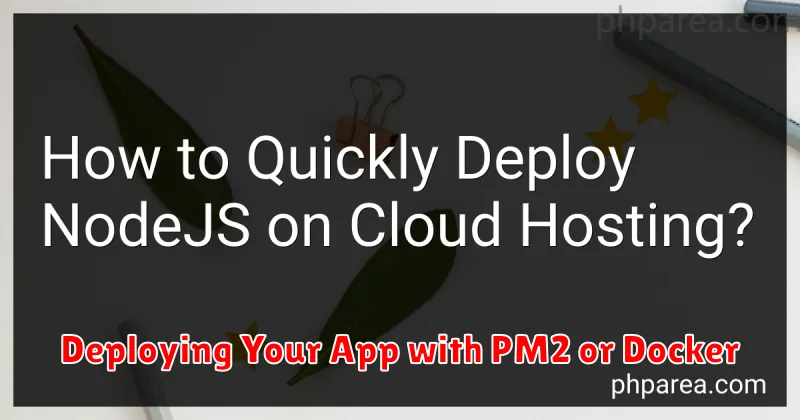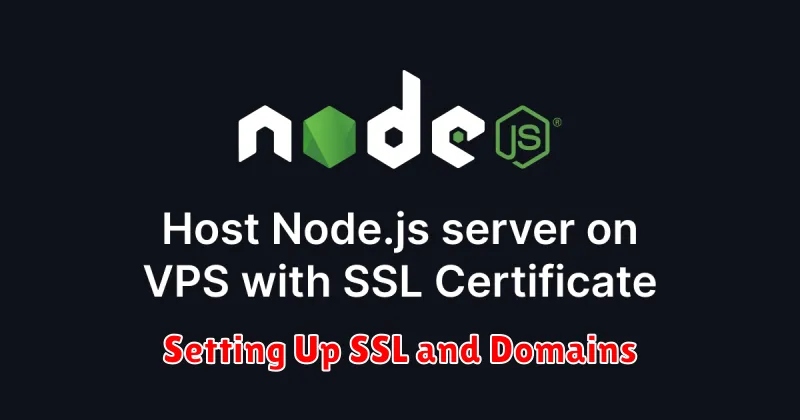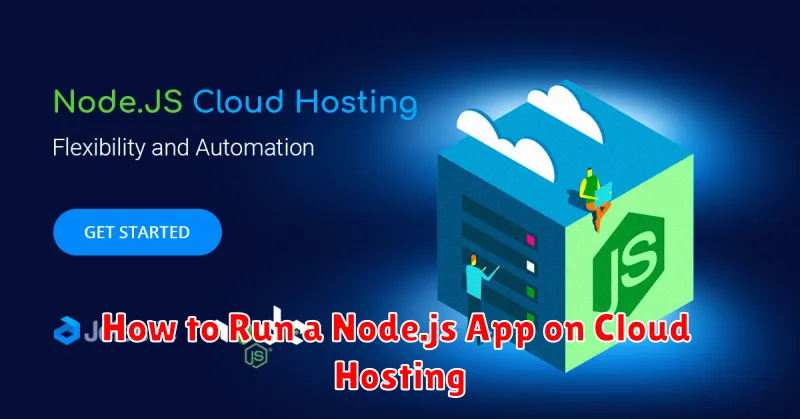Deploying your Node.js application to cloud hosting is a crucial step in making your project accessible to the world. This comprehensive guide will walk you through the process of how to run a Node.js app on cloud hosting, covering everything from choosing the right cloud provider to optimizing your application for performance and scalability. Whether you are a seasoned developer or just starting your journey with Node.js deployment, this article will provide you with the essential knowledge and practical steps to successfully deploy and manage your application in the cloud.
We will explore various cloud hosting options, including popular platforms like AWS, Google Cloud, and Azure, discussing their strengths and weaknesses in the context of Node.js applications. You will learn about essential concepts such as setting up a server environment, configuring databases, managing dependencies, and implementing continuous integration/continuous deployment (CI/CD) pipelines. By the end of this guide, you’ll be equipped with the skills to confidently deploy, monitor, and scale your Node.js app on your chosen cloud hosting platform.
Why Host Node.js in the Cloud?
Hosting your Node.js applications in the cloud offers numerous advantages over traditional hosting solutions. Cloud hosting provides scalability, allowing your application to handle traffic spikes and growth seamlessly. You can easily adjust resources like RAM and CPU based on demand, ensuring optimal performance without overspending.
Cost-effectiveness is another compelling reason. Cloud providers offer various pricing models, including pay-as-you-go options, eliminating the need for upfront investments in hardware and infrastructure. This allows you to focus resources on development and other core business activities.
Cloud hosting also enhances reliability and availability. Data centers employed by cloud providers have built-in redundancy and failover mechanisms, ensuring your application remains accessible even during hardware failures or other unforeseen events.
Furthermore, cloud platforms offer a wide range of tools and services that simplify deployment, management, and monitoring of your Node.js applications. This can significantly streamline your workflow and reduce operational overhead.
Choosing the Right Cloud Provider
Selecting the right cloud provider is a crucial step in deploying your Node.js application. Several factors influence this decision, including cost, scalability, performance, and available services. Cost considerations involve not only the initial pricing but also the potential for scaling costs as your application grows. Analyze pricing models carefully to understand potential future expenses.
Scalability refers to the provider’s ability to handle increased traffic and resource demands. Choose a provider that offers flexible scaling options to accommodate your application’s growth without performance degradation. Performance is paramount for a positive user experience. Consider factors like server locations and network infrastructure when evaluating providers. A provider with servers closer to your target audience can significantly reduce latency.
Finally, consider the services offered by each provider. Does the provider offer managed databases, serverless functions, or other services that can simplify your development and deployment process? Evaluating these factors will help you choose the provider that best aligns with your application’s specific needs and budget.
Creating a Server and Installing Node.js
This section details setting up a server and installing Node.js, crucial steps for running a Node.js application on cloud hosting. Choosing the right server depends on your application’s needs and budget. Popular cloud providers offer various server instances, from shared to dedicated.
After selecting a server, access it via SSH. Secure Shell (SSH) allows secure management of your remote server. Use your provider’s instructions to connect.
Once connected, the next step is installing Node.js. Use a package manager like apt (for Debian/Ubuntu) or yum (for CentOS) to streamline the installation process. Update your package lists before proceeding.
Execute the appropriate commands for your server’s operating system to install Node.js and npm (Node Package Manager). Verify the installation by checking the version of Node.js and npm using the commands node -v and npm -v respectively. These commands will output the installed versions, confirming successful installation.
Deploying Your App with PM2 or Docker

After setting up your cloud hosting environment, you need a robust way to run your Node.js application. Two popular choices are PM2, a process manager, and Docker, a containerization platform.
PM2 simplifies application management. It enables features like automatic restarts, load balancing, and performance monitoring. After installing PM2, you can start your application with a command like pm2 start app.js. PM2 ensures your application stays running even if it encounters errors.
Docker offers a different approach by packaging your application and its dependencies into an isolated container. This container is portable and can run consistently across different environments. You’ll need a Dockerfile that outlines the instructions for building the image. After building the image, you can deploy it as a container on your cloud hosting platform.
Choosing between PM2 and Docker depends on your needs. For simpler applications, PM2 is a straightforward choice. For complex applications requiring environment consistency and scalability, Docker offers a more robust solution.
Configuring a Reverse Proxy with NGINX
A reverse proxy sits in front of your Node.js application, accepting client requests and forwarding them to your app. This setup offers several benefits, including improved security, load balancing, and SSL/TLS encryption termination.
NGINX is a popular choice for reverse proxying. Configuration involves creating a new server block within the NGINX configuration file (typically located at /etc/nginx/nginx.conf or /etc/nginx/sites-available/your_domain). Within this block, you’ll specify the listening port (usually 80 for HTTP or 443 for HTTPS), the server name (your domain or IP address), and most importantly, the proxy_pass directive.
The proxy_pass directive tells NGINX where to forward incoming requests. This should point to the address and port your Node.js application is listening on, for example: proxy_pass http://localhost:3000; (assuming your app runs on port 3000). Other useful directives include proxy_set_header for setting custom headers and proxy_redirect for modifying redirect locations.
After configuring the NGINX server block, test the configuration for syntax errors with sudo nginx -t and then reload NGINX with sudo nginx -s reload to apply the changes. Your Node.js application should now be accessible through the reverse proxy.
Setting Up SSL and Domains

Securing your Node.js application with SSL and configuring your domain is a crucial step after deploying to cloud hosting. This ensures secure communication and builds trust with your users. Most cloud providers offer streamlined processes for managing SSL certificates and domains.
Typically, you’ll begin by adding your domain to your cloud hosting platform. This usually involves configuring DNS records, like A records or CNAME records, to point your domain to your server’s IP address or hostname. Consult your cloud provider’s documentation for specific instructions, as the steps vary.
Next, you’ll need to acquire an SSL certificate. Many cloud platforms offer free SSL certificates through services like Let’s Encrypt. If you have a pre-existing certificate, you can usually upload it. Once the certificate is installed, your application will be accessible via HTTPS.
Enforcing HTTPS redirects all HTTP traffic to HTTPS. This is a recommended practice for enhanced security. Your cloud provider likely has options to automatically manage this redirection.
Ensure your Node.js application is configured to listen on the correct port, usually port 443 for HTTPS. Verify that your application framework is properly handling HTTPS requests. Testing your SSL configuration using online tools is highly recommended.
Monitoring App Performance
Monitoring your Node.js application’s performance after deployment is crucial for maintaining a healthy and efficient service. Performance monitoring helps identify bottlenecks, optimize resource utilization, and ensure a positive user experience.
Several tools and techniques can be employed for effective monitoring. Using logging libraries allows you to track events and errors within your application. Analyzing these logs can reveal areas needing optimization. Metrics monitoring, using services or built-in tools, provides real-time insights into resource consumption, such as CPU usage, memory allocation, and request latency. Setting up alerts for critical metrics ensures you’re notified immediately of potential issues.
Performance testing, including load testing and stress testing, helps you understand how your application performs under different levels of demand. This proactive approach can reveal vulnerabilities and allow for adjustments before they impact actual users.
Finally, consider using Application Performance Monitoring (APM) tools. These tools provide comprehensive insights into application behavior, tracing requests across various components and identifying performance bottlenecks. APM tools often include features like error tracking and distributed tracing, making them valuable assets in maintaining application performance.

